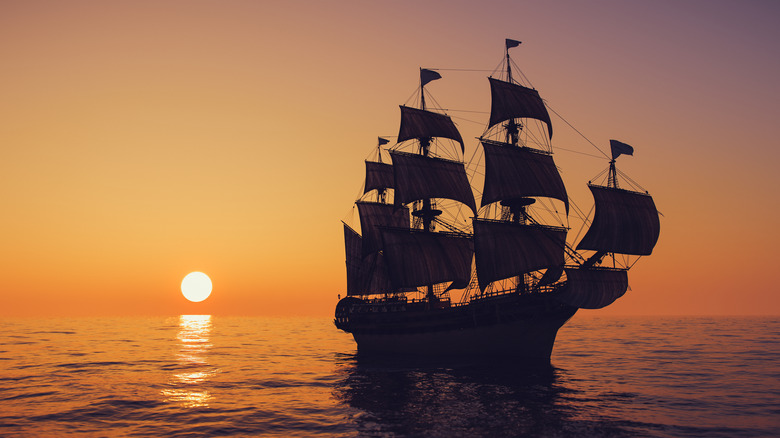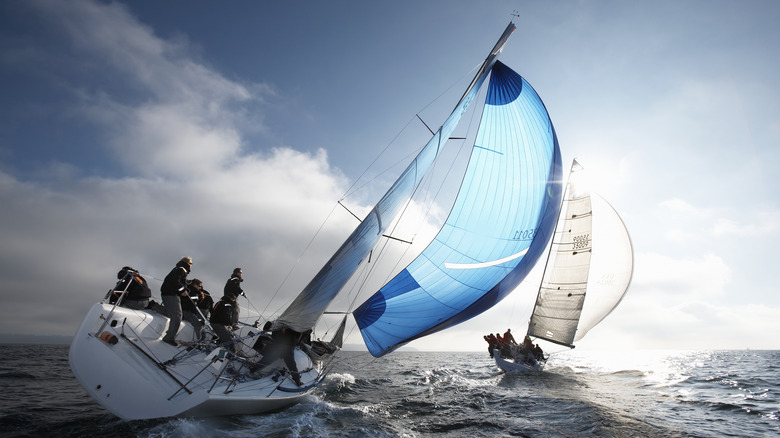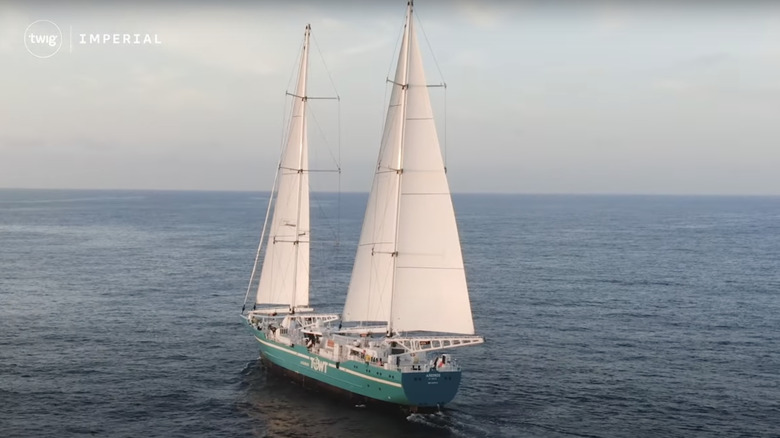Why Don't Most Modern Ships Have Sails Anymore? (And Which Ones Do)
Ships harnessed winds as the primary means of propulsion for many centuries before steam engines took center stage in the 1800s; it's quite poetic how maritime travel was greenhouse gas-free long before such concerns were even a thing. Today, most ships use diesel engines, sometimes supplemented by gas turbine engines. Although the transition to this technology has streamlined maritime travel, it has also led to a steep rise in shipping-related air pollution. Currently, the shipping industry contributes close to 3% of the global emissions every year.
Although shipping companies have incorporated methods like cruising at slower-than-maximum speed to save fuel and decrease emissions, the environmental impact of this industry is a growing concern. So, why can't ships simply return to harnessing the wind like in the good old days? Interestingly, some modern ships incorporate wind propulsion systems with conventional engines, though they are a long way from mainstream adoption. To understand why modern ships don't use sails anymore, let's first look at how sails work with the wind.
Sailing ships are fickle
Sailing ships might seem like a thing of the distant past, but the German-built sail freighter Pamir was in steady use until sinking in a hurricane in 1957. However, sailing ships faced a variety of problems in the waters due to their heavy reliance on forces of nature. They needed the wind to sail smoothly, but both insufficient and very strong winds could pose problems. Weak winds or doldrums would leave boats stranded for long periods, while harsh weather was a danger to vessels, crews, and cargo.
Moreover, maneuvering a sail ship was a notoriously difficult task, requiring a large and skilled crew. Changing course took time, making it hard to dodge immediate obstacles or looming storms. Additionally, sailing ships had to travel longer routes to take advantage of the available winds. Ships crossing the Atlantic would often travel long distances to harness strong trade winds, making the journey even longer and more unpredictable. Today, it takes around 10-20 days to cross the Atlantic on a cargo ship.
Steam engines completely revolutionized maritime travel after being introduced during the early 19th century. In 1819, The SS Savannah was the first steamship ship to cross the Atlantic, although she had sails for propulsion as well. Steam engines continued to improve throughout the 19th century, with refinements in fuel consumption and power delivery. Interestingly, the opening of the Suez Canal also played a part in popularizing steam engines, as the prevailing winds in the Gulf of Suez made navigating the canal under sail impractical.
Some modern ships are adopting wind propulsion
Back in the day, ships were mostly square-rigged, meaning they harnessed winds much like a parachute. These sails allowed ships to be pushed in the direction of the wind, but this was a slow and unreliable way to travel. Modern triangular sails work much like vertical airplane wings, harnessing Bernoulli's principle and the resultant lift force to allow travel in any direction. Sailboats can now travel more efficiently using the same laws of physics that explain why airplanes take off and land into the wind.
As innovations have made sailing more practical, some modern shipbuilders have tried new designs combining wind propulsion systems with conventional engines to minimize fuel expenditure and emissions. The 81-meter (266 foot) French cargo ship Anemos shown above is the largest sailing cargo ship in the world. Anemos uses 32,000 square feet of sails and 42-foot-long masts to reduce carbon emissions by up to 95% compared to conventional container ships. Additionally, Sweden's Wallenius Marine has launched the Oceanbird project, aimed at building the largest sailing ship ever at 200 meters (656 feet).


